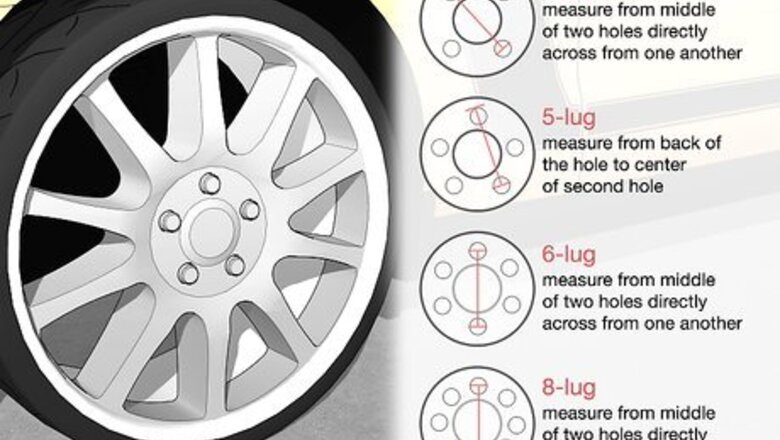
views
Sizing Your Wheels Correctly
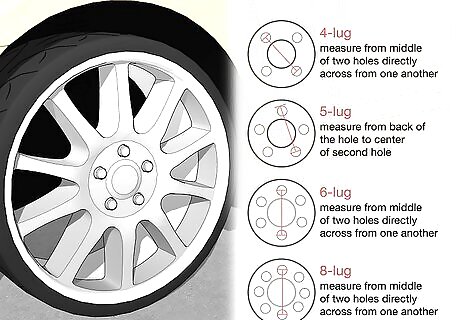
Count the bolts on the current rim to identify your vehicle's bolt pattern. Take a look at your wheels and count the number of bolts encircling the central hub. Then, grab a ruler or tape measure and extend it from the center of one bolt to the center of the bolt directly opposite. Putting the 2 numbers together will give you your vehicle’s bolt pattern, which you’ll need to know to ensure that your new rims fit properly. Bolt pattern is typically represented as compound dimensions, as in, “5x4.5.” That is, 5 lugs with 4.5 inches (11 cm) of space between each. Bolt patterns come in 4-, 5-, 6-, or 8-lug configurations. The majority of sedans, SUVs, and small trucks, for example, have 4 or 5 lug holes, whereas large trucks and other heavy vehicles often have 6 or 8. If your vehicle has a 5-lug hole pattern, measure from the center of one of the upper bolts to the bottom edge of the bolt directly beneath it.Tip: To save yourself some trouble while shopping around for a new set of rims, only compare models that match your vehicle’s specific bolt pattern.
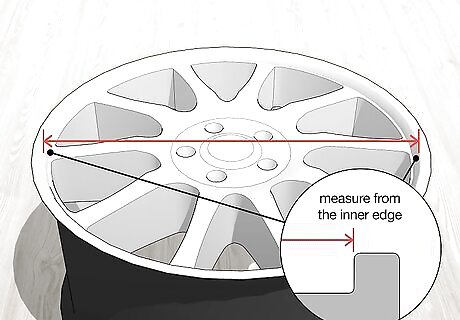
Measure across the face of your wheels to determine their diameter. Stretch your measuring device from the inner edge of one bead seat (the spot along the rim where the spokes terminate) to the inner edge of the bead seat on the opposite side. The number you get is the wheel’s diameter, or how big it is across its vertical surface. Wheel diameters can vary widely, from 10 in (25 cm) to 22 in (56 cm) or larger. If possible, remove one of the wheels before measuring it. This allows you to work more efficiently and decreases your chances of making a mistake. You can also figure out the diameter by examining the last 2 digits of the multi-part serial code printed in your vehicle's owners manual, looking on your tires, or checking the sticker in the driver's side door jamb of your vehicle. While the owner's manual can tell you the diameter of your vehicle's wheels, their overall dimensions are influenced by several different variable factors, so you'll need to do the rest of the measuring yourself.
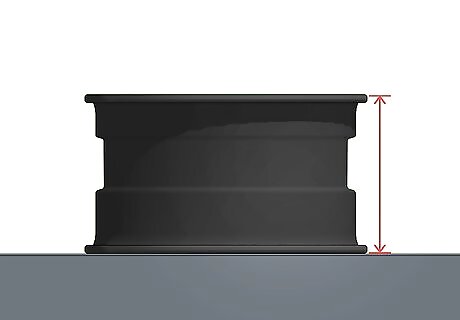
Find the width of your wheels by measuring across their outer edge. If you haven’t done so already, dismount the wheel and set it face down on the floor. Place the end of your ruler or tape measure against the floor next to the lower bead seat, hold it straight up, and note the number displayed beside the top of the upper bead seat. This is the total width of the wheel. For greater accuracy, lay a separate ruler across the upper face of the wheel and use your measuring device to measure from the floor to the ruler. Wheel width is expressed in inches, whereas tire width is given in millimeters. It’s a good idea to jot down your measurement in both forms, just in case.
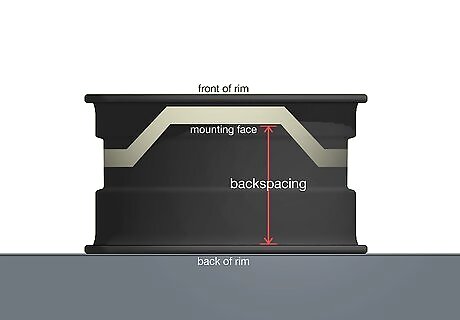
Measure from the mounting hub to the top of the wheel to determine backspacing. Reset your measuring device against the rear face of the mounting hub (the small circular opening where the wheel connects to the axle) and line it up with the upper edge of the dismounted wheel. This number indicates the backspacing of the wheel, or how deeply inset the mounting hub is. Measuring and recording your wheels' backspacing separately makes it much easier to figure out their offset, which is a crucial value when selecting rims.

Subtract the backspacing from the width and divide by 2 to calculate your wheels' offset. If your wheel has a width of 9 inches (23 cm) and a backspacing of 6 inches (15 cm), subtracting the second measurement from the first will leave you with a difference of 3 inches (7.6 cm). Splitting that number in half (to reflect the distance to the wheel's centerline, which is your reference point) therefore gives you an offset of 1.5 inches (3.8 cm). In simple terms, the offset of a wheel is the distance from its hub mounting surface to its center line. Wheel offset can be “positive,” “negative,” or “zero” (no offset). It’s important to choose rims with an appropriate offset for your vehicle’s specs. Your wheels must have a safe amount of clearance from the braking components, fenders, and other neighboring parts.
Picking out a Set of Rims
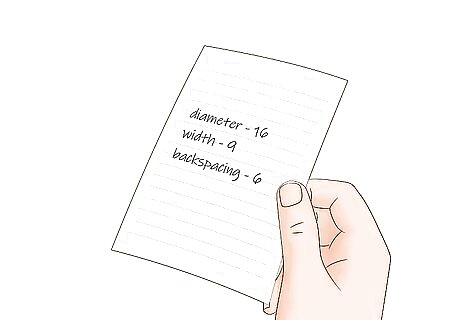
Restrict your search to wheels of a suitable size. Once you’ve done all major measuring, you should have a better idea of what size rims will work best for your vehicle. Keep these measurements in mind while you’re comparing different models. They’ll help you narrow down your options considerably, which will in turn make the selection process far less of a headache. If you’re still confused about what size rims you need, talk it over with a qualified wheel and tire specialist.Tip: Feel free to size your wheels up or down by a few inches as you like—just be careful not to overdo it. As their width and diameter change, so will the way they interact with the road.

Go with alloy wheels for a good balance of fashion and function. These days, most aftermarket rims are cast from alloys made with metals like aluminum, magnesium, or nickel. Alloy wheels are strong and lightweight, and withstand heat exceptionally well. They also tend to have the most aesthetic appeal, since they allow for a greater variety of designs and spoke patterns. Other advantages of alloy wheels include improved braking, resistance to rust and corrosion, better fuel economy, and longer overall tire life. Alloy wheels generally cost quite a bit more than steel wheels. Even so, they’ll be well worth it if you’re looking for the best possible compromise between style, performance, mileage, and cost.
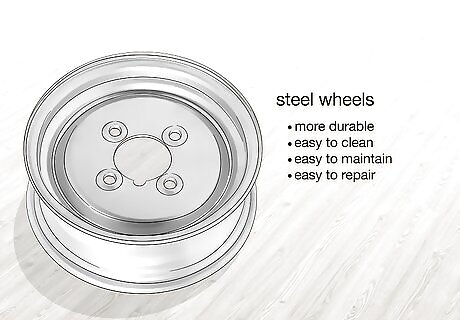
Opt for steel wheels if you value performance over all else. Thanks to their solid, welded construction, steel wheels are more hard-wearing than alloy wheels. Their added weight and ability to hold up to impact can be a big plus if it’s particularly cold where you live, or if you do a lot of driving on rough road conditions. The same construction that makes steel wheels so durable also makes them easier to clean, maintain, and repair. One downside of steel rims is that they don’t come in as many different designs as alloy rims, since the way they’re manufactured doesn’t allow them to be molded as elaborately.
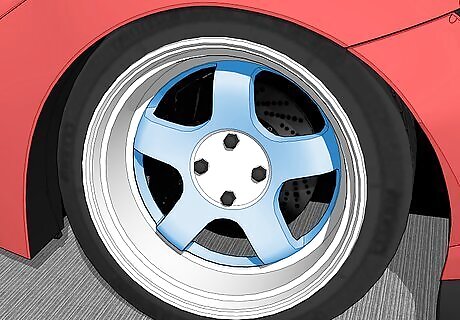
Choose colored rims if you want to lend your vehicle some added flair. Matching your wheels to your primary shade of paint is always a safe bet, though you could also bring together two complementary tones, like blue and yellow or green and purple, if you want to mix things up. Another popular option is to pick out rims that tie in with any other accents your vehicle may have, such as racing stripes, decals, or contrast paint. The color of your rims is largely a matter of preference, so don’t be afraid to play around with different combinations and listen to your own sensibilities. The right rims can really tie your car’s many features together, but the wrong ones can come off as tacky and unattractive. Rims that are all one color, for instance, can be a bit much when paired with a vibrant paint job in the same shade.
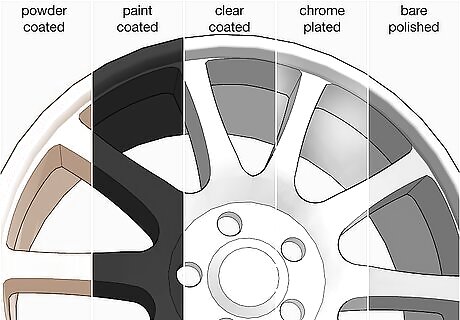
Select a finish that works with the rest of your customizations. Rims also come in several different finishes. These include powder-coated, paint-coated, clear-coated, bare-polished, and chrome-plated for that clean, eye-catching flash. Different finishes come with different amounts of required upkeep and levels of protection from the elements. Again, this decision mostly comes down to what you like. In addition to the finish itself, you’ll have a choice between a few levels of shine. Matte wheels have a flat, understated look with almost no luster, while satin and gloss offer a couple more degrees of brightness and mirror wheels are reflective enough to see yourself in.
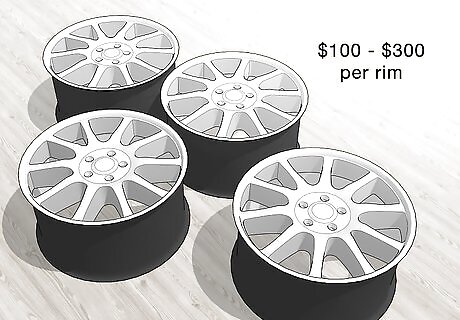
Make sure you’re buying within your budget. Before you get too excited about a particular set of rims, think about how much you realistically have to spend. On average, a single brand new automobile wheel will run you somewhere between $100 and $300. Those numbers will only go up as you start looking at higher-end or fully-custom designs and features. The more bells and whistles you go in for, the more money you can expect to drop on your upgrade when it’s all said and done. If you plan on having your rims put on by a professional, be prepared to fork over $20-40 extra per rim to cover the cost of installation.


















Comments
0 comment